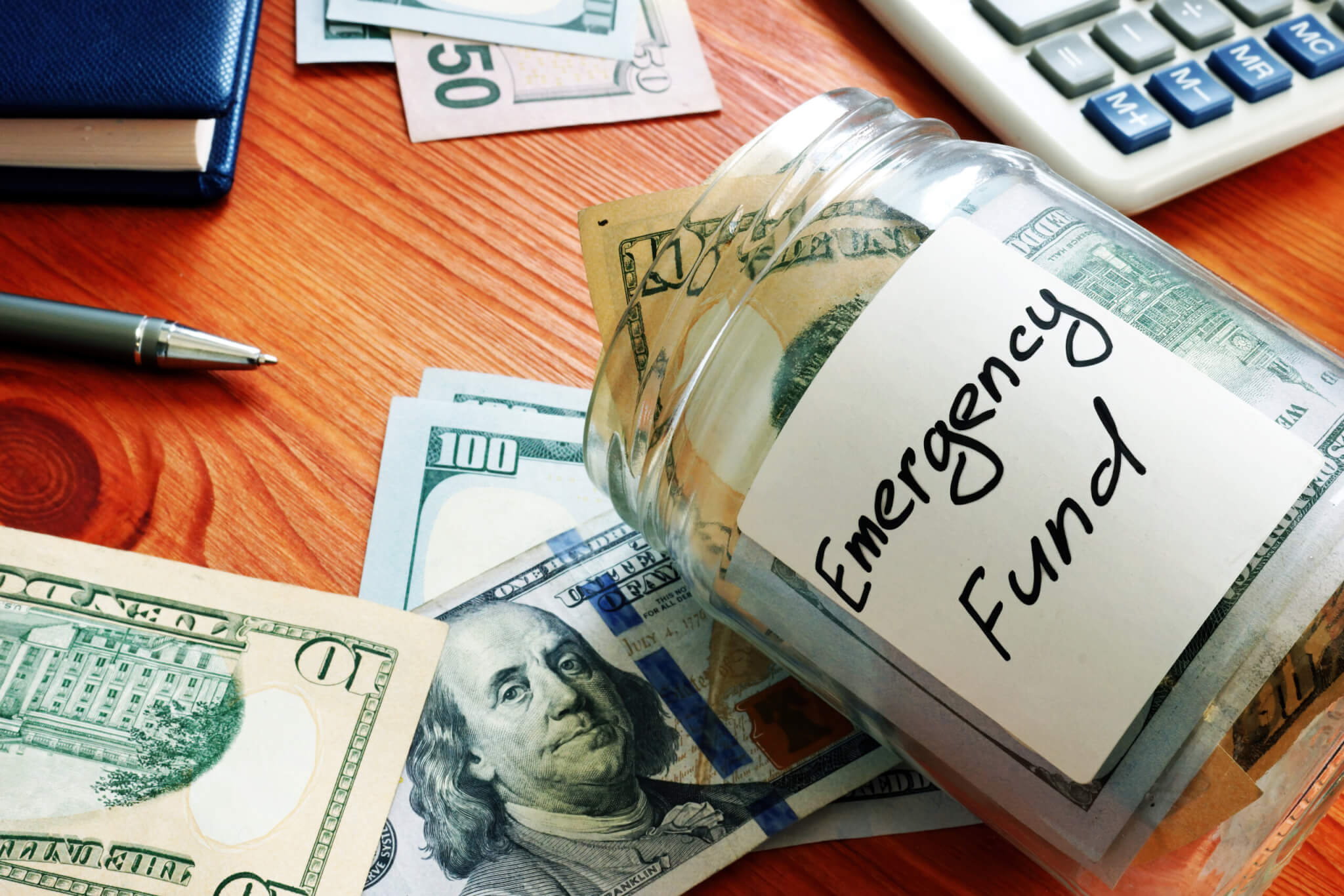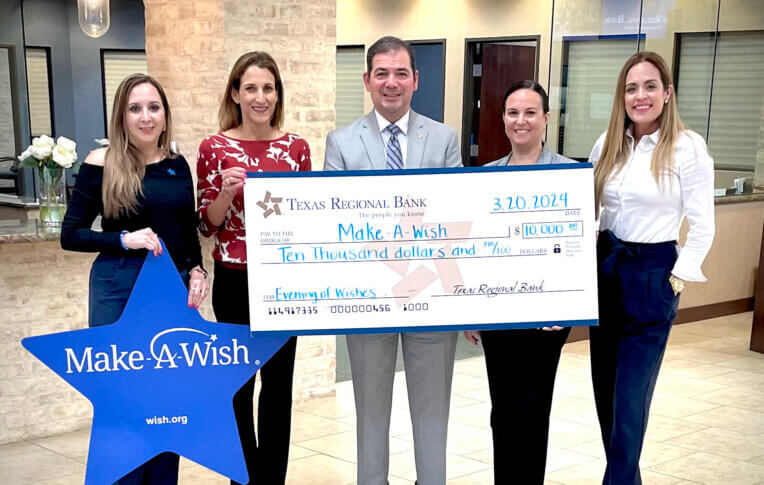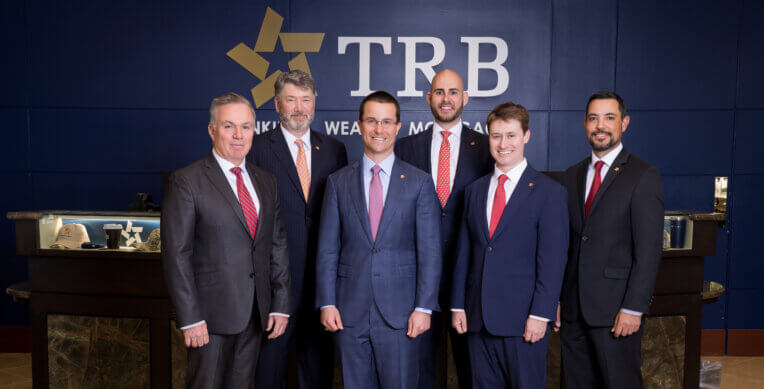When your car breaks down, what do you do: Do you use a credit card? Borrow money from a payday lender? Sell stuff at a pawn shop? Or do you walk/carpool to work until you can afford to fix the car? You are not alone if any of these are what you would do. Nearly 30% of all Americans do not have an emergency fund to help cover unexpected costs like a car breaking down, medical bills, or other unplanned expenses.
Having extra funds available for emergencies might seem impossible, especially if you live paycheck to paycheck. However, having an emergency fund is essential to your overall financial well-being.
Key Takeaways:
- Withdrawing money from your 401(k) could mean the difference between retiring at 55 and working until 60 or beyond.
- Using a credit card as an emergency fund should be a last resort and only used when you’re confident in your ability to pay it off quickly and responsibly.
- Start small and build your way up with 3 to 6 months’ worth of an emergency fund. Do not overextend yourself and focus on setting obtainable goals.
Emergency Fund Mistakes to Avoid
- Do not use your 401(k) or other investments as an emergency fund:
Many people consider cashing out their 401(k) when they need money urgently. However, this may not be the best choice as it can lead to costs in terms of taxes, fees, and penalties. These costs can eat into your retirement savings and set you back several years. Moreover, withdrawing money from your 401(k) could mean the difference between retiring at 55 and working until 60 or beyond. If you need cash ASAP, explore other options before tapping into your retirement savings.
- Do not rely on credit cards for emergencies:
Using a credit card as an emergency fund can be tempting when unexpected expenses arise. However, exercising caution and discipline is essential when relying on credit cards for emergencies. If you manage your credit card use responsibly, consider looking for credit cards that offer no interest for a specific period when you first sign up. This can help you avoid accruing interest charges while giving you time to pay off the balance. It’s crucial to always pay the balance in full or within a very short period to avoid high-interest rates and prevent the debt from spiraling out of control. Ultimately, using a credit card as an emergency fund should be a last resort and only used when you’re confident in your ability to pay it off quickly and responsibly.
- Do not lock your emergency fund in high-yield savings accounts or certificates of deposit (CD):
A savings account or CD is a great way to earn a higher interest rate on your funds. However, it’s essential to remember that these accounts may have specific requirements and limitations. For example, high-yield savings accounts may require a minimum balance to avoid fees, and if your balance falls below that threshold, you may be charged a monthly maintenance fee. CDs, on the other hand, usually have a fixed term during which your money is locked in, and if you need to make an early withdrawal, you may have to pay a penalty fee. So, while these accounts can be a great way to earn more on your savings, weighing the potential benefits against any costs or restrictions that may apply is crucial. The idea of an emergency fund is to have it available in a pinch, so explore account options that are easy to make withdrawals from.
Related Article:

Budgeting on Low Income: 18 Steps to Cut Spending
Sticking to a tight budget on a low income is easier than people think; the first step is the most important, starting a budget. But, once you start budgeting, you will find that creating ways to save more money can be fun. Hunting down sales, being less stressed, and having extra cash in your bank accounts make budgeting all worth it.
Read MoreHow to Start an Emergency Fund
Having extra funds available for emergencies might seem impossible, especially if you live paycheck to paycheck. However, having an emergency fund is essential to your overall financial well-being. Most experts say you need 3-6 months’ expenses in an emergency fund. For most people, though, that can seem like an unobtainable amount of money.
That is why you should start small and work up to having 3-6 months of an emergency savings account set aside.
Starting a Budget
The first step to starting an emergency savings account is identifying areas where you spend extra money. Now, additional money does not have to mean the money you have left over after a paycheck; it also means the extra money you spend on non-essential items such as fast food, buying morning coffee, and getting your hair and nails done.
Using a budgeting template is a tool that can help you map out your finances. Once you have your monthly expenses broken down, you should have a good idea of the amount of extra money available to allocate to an emergency savings account.
Setting Small Savings Goals
One of the most important things to remember when starting an emergency fund is to set a target goal. It’s important to avoid developing unrealistic plans as they can be unmotivating. Instead, begin with a goal that seems achievable, even small. For instance, you can save enough to cover two weeks of pay for emergency purposes. This will help you build a solid foundation and motivate you to save more in the long run.
Start small and slowly build, adding weeks or months to your plan. Before you know it, your small goals will become your large ones.
Making Regular Contributions
After making a budget, you should know how much extra monthly money you have. Even if the amount is $5 or $25, set up the additional amount to be transferred automatically to a savings account. Setting up automatic transfers will help keep you from physically moving money to your savings. Not having to transfer the money physically keeps you from second-guessing the transfers.
Committing a certain amount, a month, a week or a paycheck helps you build a habit of saving. Remember that saving is supposed to be a habit, not a struggle. If you are straining your financial health to put away a certain amount, return to your budget and readjust as needed.
Stick to Your Budget
It’s important to avoid overspending once you’ve set your budget. It’s tempting to spend more when you realize that you have extra money. However, if you find an additional $25 at the end of the month, even after saving some, it’s better to put it in your savings account rather than spend it.
Other Savings Methods to Try
Emergency Funds in a Nutshell
There is no one-size-fits-all when it comes to savings. Everyone’s life and financial expenses are different. Create a budget and stick to it. Start small and build your way up with 3 to 6 months’ worth of an emergency fund. Do not overextend yourself and focus on setting obtainable goals. For more information, visit Personal Finance Archives – Texas Regional Bank website.



